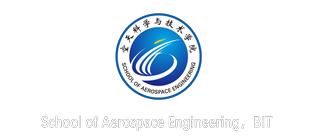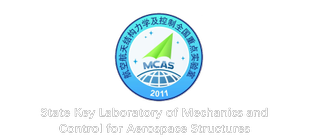超结构动力学方向主要研究低维纳尺度结构的动力学基础问题,微纳器件的设计与动力学分析等。
Dynamics of nano-systems mainly includes basic dynamics problems of low-dimensional nanostructures; design and dynamics analysis of micro/nano devices, and so on.
❶
低维纳尺度结构的动力学基础问题研究
Dynamics of low-dimensional nanostructures
低维纳米材料具有与宏观材料迥异的力学性能,且纳米结构处于独特的力学环境中,如温度作用、量子效应、范德华作用等,导致其动力学行为异常复杂。采用连续介质力学分析、分子动力学模拟、量子力学计算、实验研究相结合的方法,对低维纳尺度结构的动力学基础问题展开研究,如图1所示,主要包括微结构导致的非局部效应对纳结构波动行为的影响;低维纳结构的热振动行为;超低温下原子核量子效应对热振动的影响;范德华作用对多层纳米结构动力学行为的作用;纳结构非线性动力学特性等。
Low-dimensional nano materials have different mechanical properties from macro materials, and the mechanical environment of nano structures is very complex and unique, such as temperature effect, quantum effect, van der Waals effect and so on, which lead to the extremely complex dynamic behavior of nano structures. Based on the methods of continuum mechanics analysis, molecular dynamics simulation, quantum mechanics and experimental research, the basic dynamic problems of low-dimensional structure are studied, as shown in Figure 1, which mainly includes the influence of nonlocal effect caused by microstructure on the wave behavior of nanostructure, the thermal vibration behavior of low-dimensional structure, and the nuclear quantum effect on the thermal vibration at ultra-low temperature, the effect of van der Waals interaction on the dynamic behavior of multilayer nanostructures, the nonlinear dynamic characteristics of nanostructures.
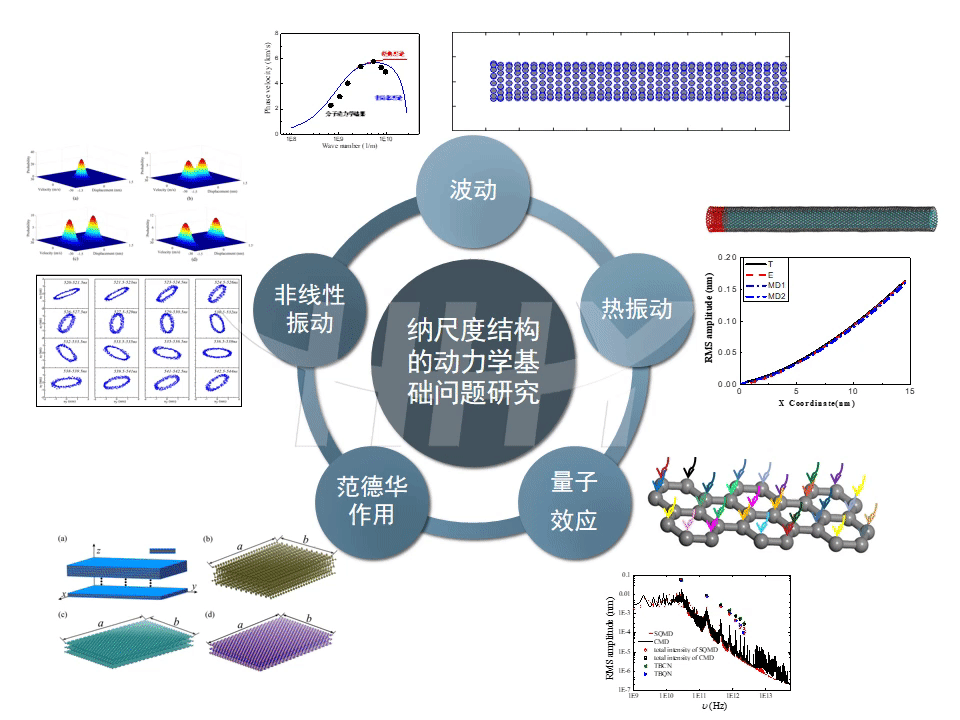
图1 低维纳尺度结构的动力学基础问题研究
Figure 1 Basic dynamics problems of low-dimensional nanostructures
❷
微纳器件的设计与动力学分析
Design and dynamics analysis of micro/nano devices
微纳器件的动力学特性直接关系到其作为超高精度探测器、量子信息器件等的性能和可靠性。以实验探索结合理论研究、计算机仿真的方法,主要研究微纳器件的制备与动力学实验研究(图2);范德华作用、卡西米尔力对微纳器件动力学行为的影响(图3);多物理场耦合作用下微纳器件非线性动力学行为等(图4)。
The dynamic characteristics of micro and nano devices are directly related to their performance and reliability as ultra-high precision detectors and quantum information devices. Based on the method of experimental exploration combined with theoretical research and computer simulation, we mainly study the preparation and dynamic experimental research of micro/nano devices (Figure 2), the influence of van der Waals interaction and Casimir force on the dynamic behavior of micro/nano devices (Figure 3); the nonlinear dynamic behavior of micro/nano devices under the coupling of multi physical fields (Figure 4).
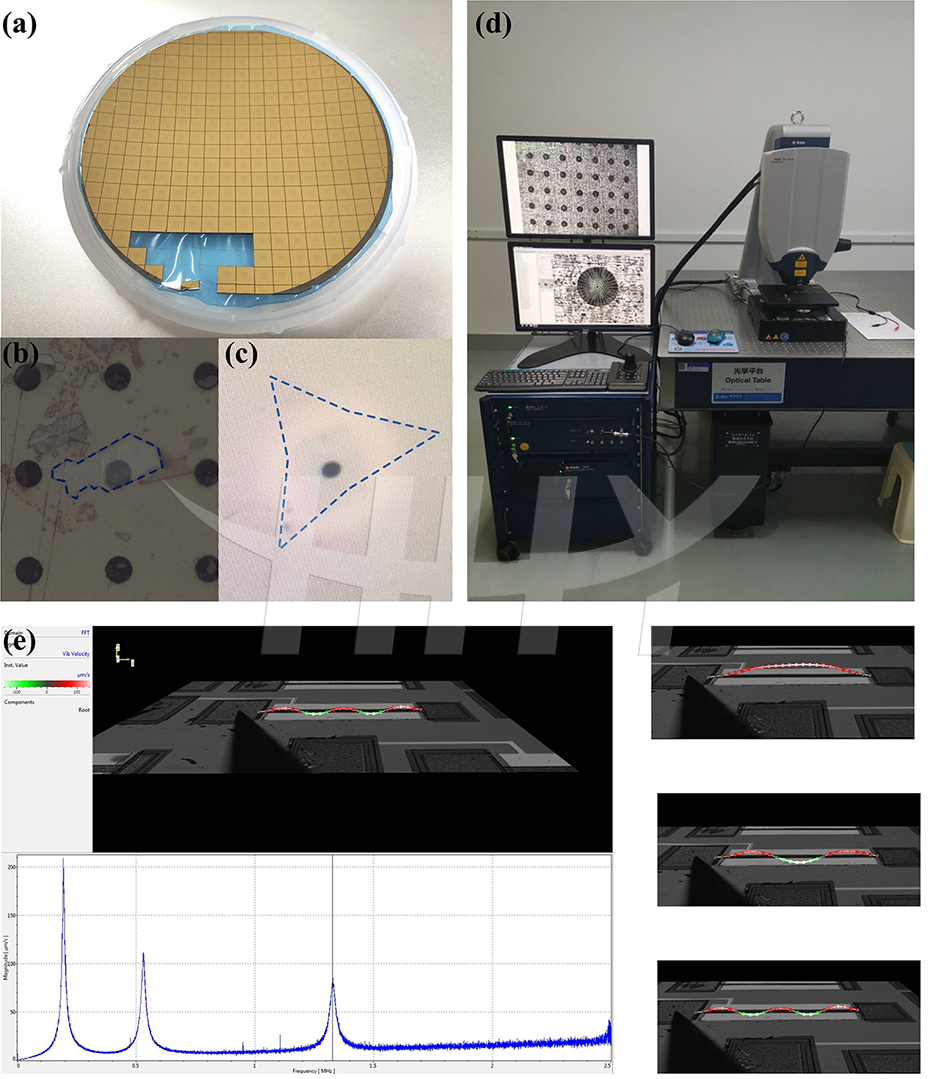
图2 微纳器件制备与动力学实验研究
Figure 2 Preparation and dynamic experimental research of micro/nano devices
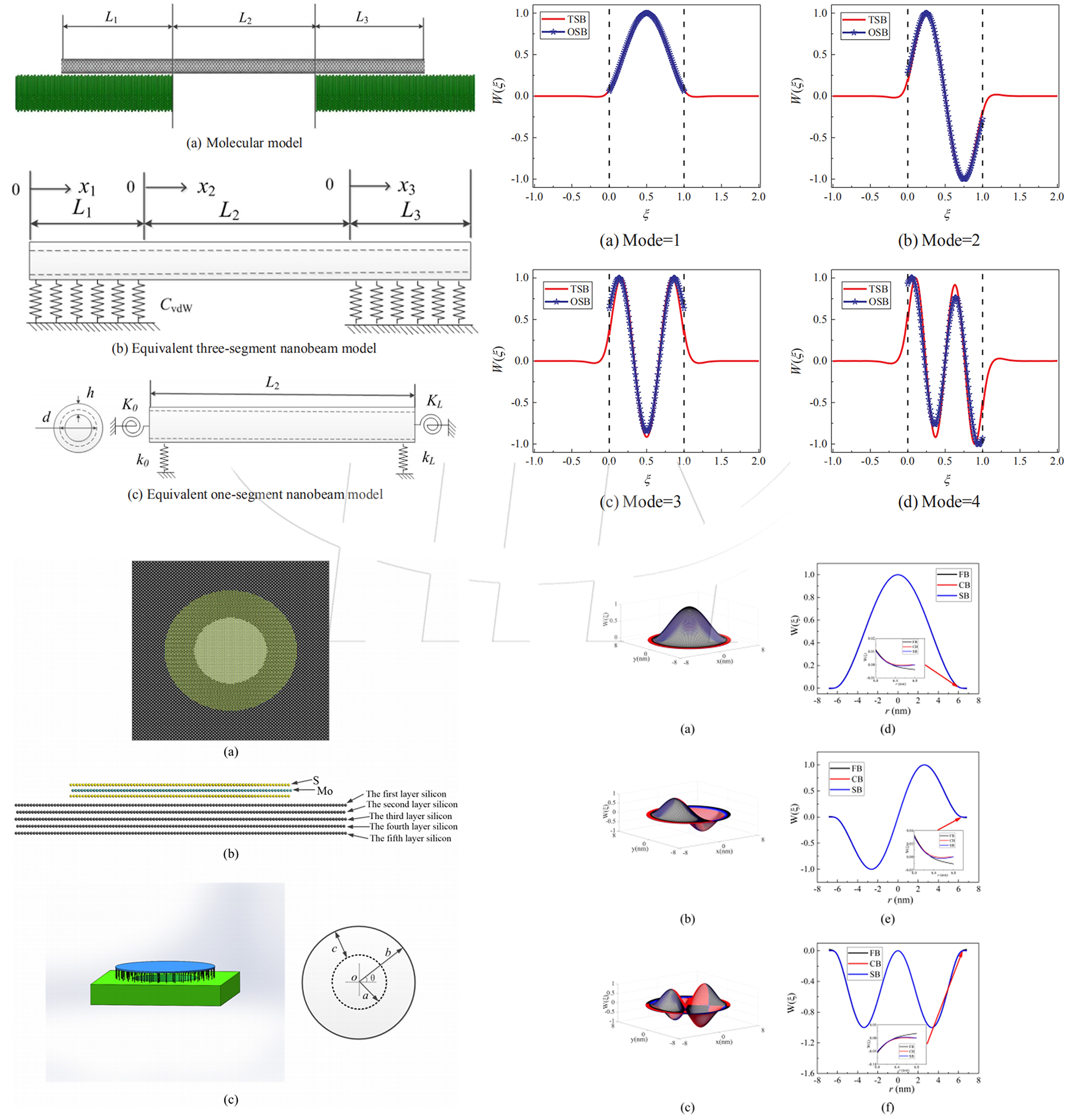
图3 范德华力边界约束对碳纳米管、类石墨烯振动行为的影响
Figure 3 The effect of van der Waals force boundary constraint on the vibration behavior of carbon nanotubes and graphene like structures.

图4 外电场对氧化锌谐振器振动频率的作用
Figure 4 Effect of external electric field on vibration frequency of ZnO resonator
❸
超材料的动力学建模、分析与控制
Dynamics and Control of Metamaterials
超材料是一种人工设计的周期性结构,可以获得与自然界中物质不同的物理属性,如负质量密度,负弹性模量等。超材料可抑制弹性波在一定频率范围的传播,在隔振方面具有很大的应用价值。依据理论及计算机仿真作为指导,设计并制造新型超材料,采用实验研究其带隙特征、隔振减震效果等。例如:纳米材料具有天然的离散构型,可为设计某些超材料提供参考,图5为类超级碳纳米管3D打印模型图以及实验过程。通过Stratasys Objet260 3D打印机制作双振子超材料模型,如图6所示。通过实验研究了带隙的超材料的带隙特征,如图7所示。实验验证了在超材料带隙区有很好的隔振减震效果。
Metamaterials is a periodic structure of artificial design, which have unusual effective physical properties (negative mass density, negative elastic modulus). Metamaterials can be used to suppress elastic wave propagation in a certain frequency range and have shown great application potential in vibration isolation. Based on theory and computer simulation as a guide for design new metamaterials. Their bandgap characteristics, vibration isolation and vibration reduction effects are studied by experiments. For example, nano materials have a natural discrete structure,which can provide a reference for the design of metamaterials. Imitated super carbon nanotubes is produced by 3D printer, and conduct experimental research, as shown in Figure 5. Metamaterials model of double resonators is produced by a Stratasys Objet260 3D printer,as shown in Figure 6. The bandgap characteristics of are metamaterial investigated by experiment, as shown in Figure 7.
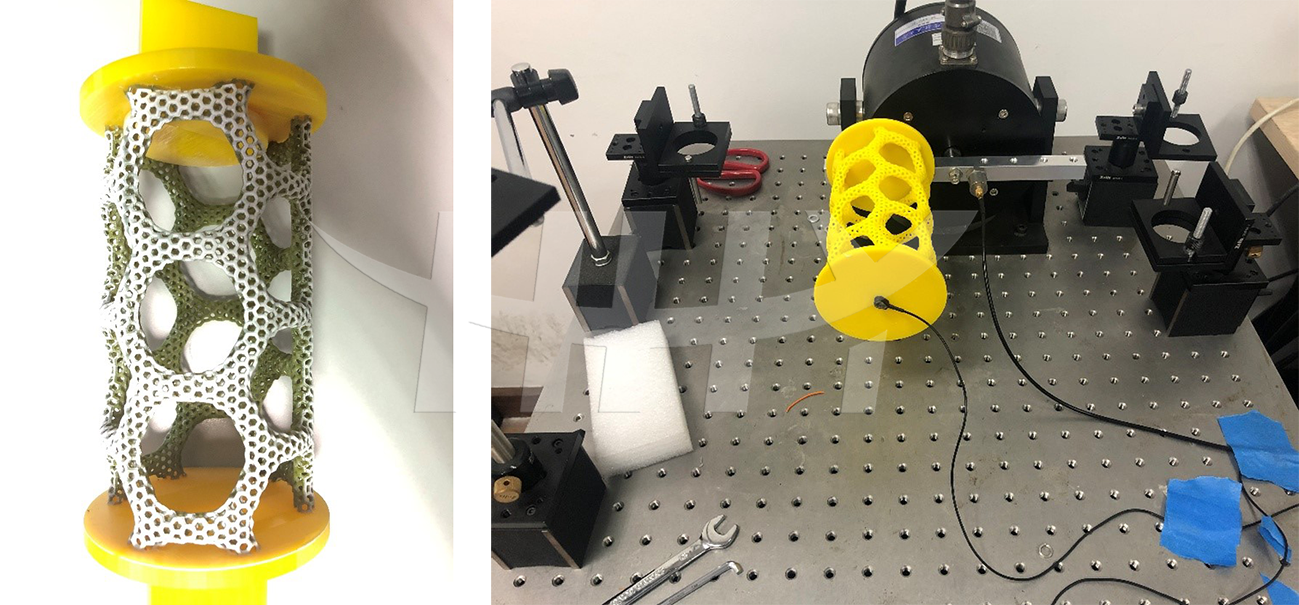
图5 类超级碳纳米管模型及实验
Figure 5 Imitated super carbon nanotubes mode and experiment

图6 双振子超材料模型及3D打印机
Figure 6 Double resonators metamaterial model and 3D printer
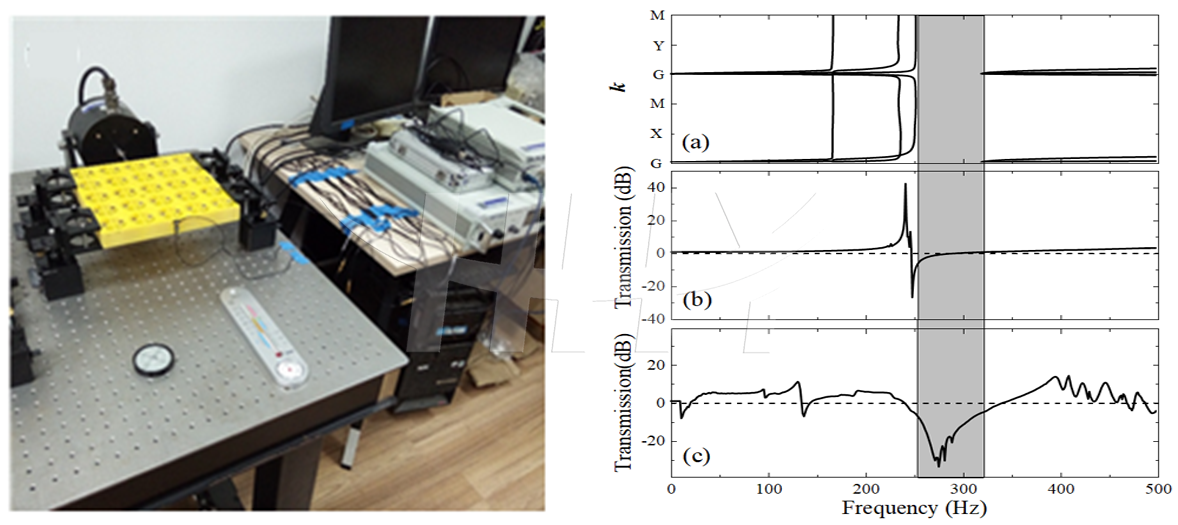
图7 振动实验以及带隙特征
Figure 7 Vibration experiment and bandgap characteristics




